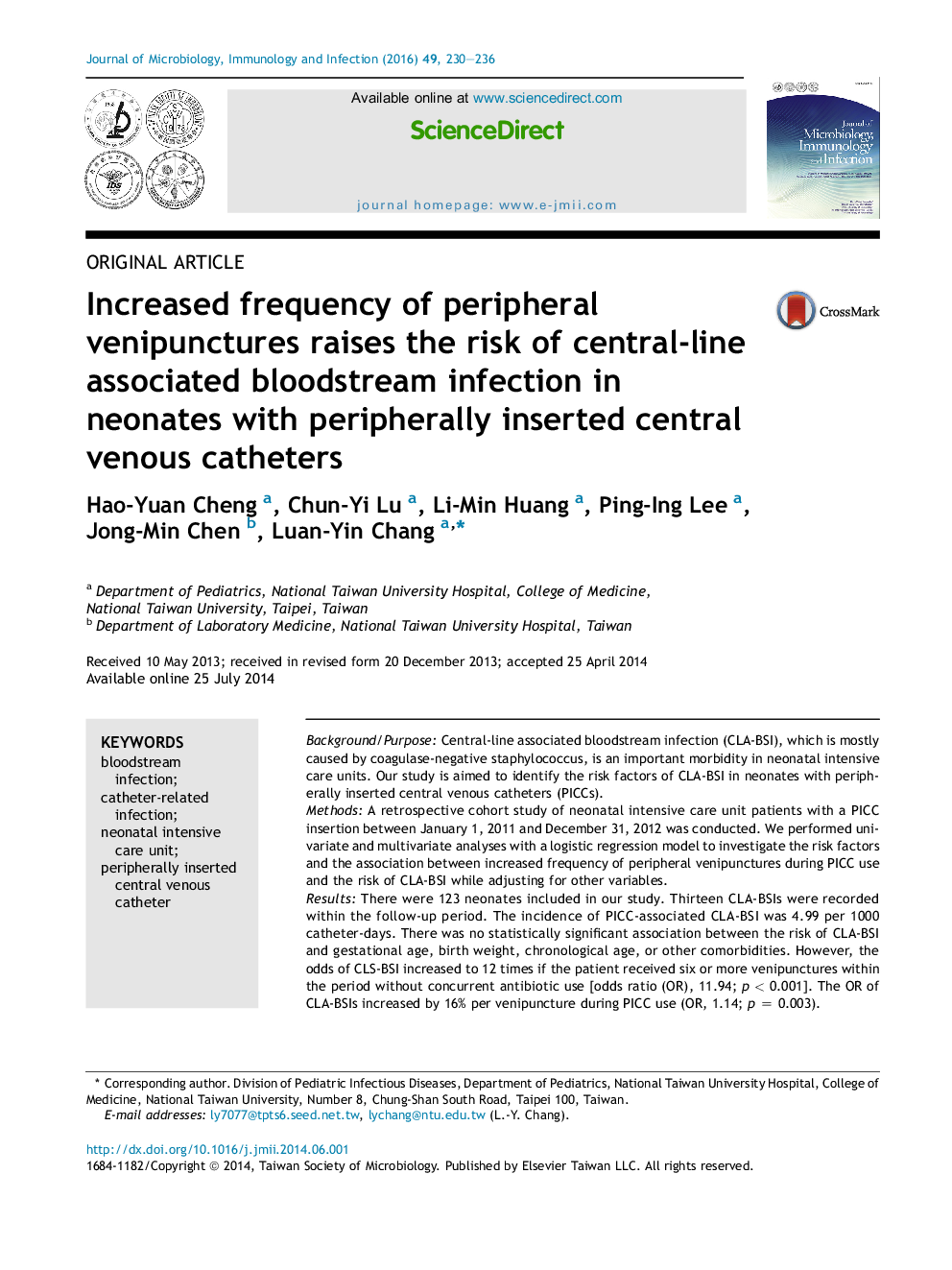| Article ID | Journal | Published Year | Pages | File Type |
|---|---|---|---|---|
| 3377729 | Journal of Microbiology, Immunology and Infection | 2016 | 7 Pages |
Background/PurposeCentral-line associated bloodstream infection (CLA-BSI), which is mostly caused by coagulase-negative staphylococcus, is an important morbidity in neonatal intensive care units. Our study is aimed to identify the risk factors of CLA-BSI in neonates with peripherally inserted central venous catheters (PICCs).MethodsA retrospective cohort study of neonatal intensive care unit patients with a PICC insertion between January 1, 2011 and December 31, 2012 was conducted. We performed univariate and multivariate analyses with a logistic regression model to investigate the risk factors and the association between increased frequency of peripheral venipunctures during PICC use and the risk of CLA-BSI while adjusting for other variables.ResultsThere were 123 neonates included in our study. Thirteen CLA-BSIs were recorded within the follow-up period. The incidence of PICC-associated CLA-BSI was 4.99 per 1000 catheter-days. There was no statistically significant association between the risk of CLA-BSI and gestational age, birth weight, chronological age, or other comorbidities. However, the odds of CLS-BSI increased to 12 times if the patient received six or more venipunctures within the period without concurrent antibiotic use [odds ratio (OR), 11.94; p < 0.001]. The OR of CLA-BSIs increased by 16% per venipuncture during PICC use (OR, 1.14; p = 0.003).ConclusionDuring PICC use, increased frequency of venipunctures, especially when there was no concurrent antibiotic use, substantially raises the risk of CLA-BSI. By decreasing unnecessary venipunctures during PICC use, PICC-associated CLA-BSI and further morbidities and mortalities can be prevented.
